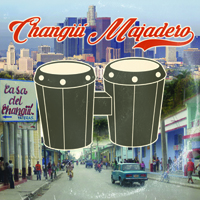
EL CHANGUI MAJADERO (self-published)
An exciting new outfit that fans of changüí will love. Sometimes called the country music (musica campesina) of Cuba, changüí is a bustling story-telling form with call and response vocals and spare instrumentation. The lead instrument is the tres, a six-string guitar with pairs of harmonizing strings (gG cc Ee) and a sprightly almost harpsichord-like twang. This percussive sounding guitar is supported by acoustic bass and then there are three percussion instruments: bongos, maracas, and a metal guiro called a guayo. While their hands are busily occupied the performers are in full voice and have their craft honed to a fine art. I was surprised to read the band are from East L.A. because if you had told me eastern Cuba that would have made perfect sense. They have translated the form perfectly and are aware of the rich traditions of the music: the bongo becomes a solo instrument; the bass echoes the patterns of the marimbula which is like a giant thumb piano; the tresero and the vocalists improvise. Garcia, the group's leader, started out as a boxer (on the Mexican junior olympic team), until he heard Grupo Changüí Guantanamo and was hooked and took up tres. He even went back to school to get a Masters in Afro-Cuban Jazz! Changüí is the root of Cuban music just as blues is the root of American popular music. Garcia's father composed corridos, which are sung news bulletins or ballads on current events, in a tradition that goes back to the medieval troubadours in the era before print, so that fits in with the timelessness and timeliness of the songs in the changüí repertoire. Garcia went to Guantanamo to study with the group whose LP had entranced him, and learned many songs from them. He found fellow souls back in LA who were also interested in the form: between them they have played with Maraca, Poncho Sanchez, Son Mayor and other luminaries of Cuban music. They knock it out of the park with this set: lovely, revelatory, beautifully recorded and strikingly new.
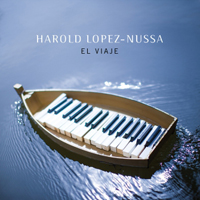
HAROLD LOPEZ-NUSSA
EL VIAJE (Mack Avenue MAC1114)
This is a great album, when they are not singing that is. I like Latin Jazz, and Cuban pianist and composer Harold López-Nussa exemplifies all that is great about it: he has a strong aura of competence based on incredible chops from a conservatory training, a deep knowledge of the music, a great sense of rhythm and a solid backing band. Nussa recorded Villa-Lobos' Fourth Piano Concerto with the Cuban National Symphony Orchestra and you get a feeling of Brazilian samba right at the outset, complete with the wispy non-vocals on "Me voy pa' Cuba." The other schmaltz-factor must come from his years touring as pianist behind Omara Portuondo, but if you set aside "Dos Gardenias" there is plenty of muscle in that repertoire and even drippy tunes can create space for a good pianist to work out. So I did not mute the opening track and mercifully it soon frees itself into a space of some keyboard pyrotechnics and fresh-ground percussion. The band features brother Ruy Adrián López-Nussa on drum kit and percussion and Senegalese bassist Alune Wade who also sings. Ruy and Harold's dad Ruy Francisco also guests on drums, and there are drop-in appearances by other percussionists. The percussionists drive the music but are also driven by López-Nussa as he does some tricky finger slamming himself on the keys. Most of the tunes are originals, but there are two well-selected covers: a Thelonious Monk tune, "Bright Mississippi," which itself was based on the changes of "Sweet Georgia Brown," and here it becomes "Feria" -- it was already well covered by Panamanian pianist Danilo Perez (who, coincidentally, is on the same label). What sounds like accordion on the ballad "Lobo's cha," is a triola. It's a plastic toy you blow into, with a keyboard, made famous by Augustus Pablo, but deftly handled here by Dad. The other classic is a rip-roaring rendition of "Bacalao con pan" by Chucho Valdés. "El Viaje" slows the tempo again, but Wade's singing spoils the lovely flugelhorn part by Mayquel González. Just my opinion, of course, but it seems redundant to have someone vocalize a melody along with a trumpet or horn playing the same notes. When Wade sticks to his bass playing like on "D'una fábula," he is excellent. Another ballad "Oriente," had another novel keyboard -- maybe another toy, it's not identified -- but then we get into a duet with muted trumpet and piano that reminds me of one of my favorite soundtrack albums, Elevator to the Gallows. It's moody and cinematic, oh, until Wade come in singing in his wistful falsetto. The outtro is a jam on the title track, with casual chatter and messing about which reminds me of Alegre All Stars' legendary sessions. For all the wimpy moments, this album still has clout.
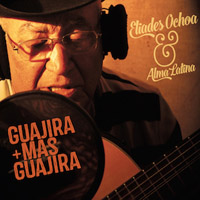
ELIADES OCHOA & ALMA LATINA
GUAJIRA + MAS GUAJIRA (TUMI 241)
There were some great musicians who, late in their careers, waltzed through the portals of the Buena Vista Sock Hop: Ruben Gonzalez, Compay Segundo, Barbarito Torres and Elaides Ochoa being the obvious names. I saw Eliades Ochoa with Cuarteto Patria live and it was a spectacular show; and before, during and after the BVSC he continued to record with his small group, in which he seems more at home. His latest offering is with a new and expanded group of "Latin Soul" brothers: he has added lead guitar, piano, three conga players, trumpet and sax. Still, he does here what he does best, play guitar and another similar instrument called an armonio, which is a tres (Cuban 6-string guitar) with two added strings. He is a phenomenal guitarist but has added another luminous performer on that instrument, Julio Montoro, who brings four original compositions to the set and adds the wild electric guitar formerly contributed by arriviste Ry Cooder in Ochoa's previous outings. They throw a couple of classics into the mix, including a song by Celina Gonzalez, which Ochoa's sister Maria sings, as she does on the other tracks, when Eliades is not taking the lead; her singing is occasionally strained and the only weak spot on this album. Another gem, "Oye ya," is from the Miguel Matamoros songbook. Even label boss Mo Fini contributes a song! The album title means something like "Country + more country." The style of music, "Guajira" is a traditional folkloric (i.e. country) music of Cuba, here updated with the electric guitar grafted on. Most of the tunes are guajiras, sons or guarachas, though quite a few are called "Latin," implying a fusion of various Cuban and extra-insular influences. You can even detect modern African influences on "El Reto." I wonder if they have encountered Diblo or Lokassa ya Mbongo on their travels. There's a cumbia beat to "Que viva la Alegria." "Rumberito baila" begins with Maria calling out the great Rumberos, like Chano Pozo, Pancho Quinto, Tata Guines and other musicians and singers, including Tito Puente and Celia Cruz -- I wonder if this is glasnost or just sentimentality since Cruz's passing. The guitar interplay is brilliant but then the seething bed of congueros is really tight involving three congueros, one of whom plays bongo or drums occasionally. This is a fired-up set, balanced with some great mellow interludes.
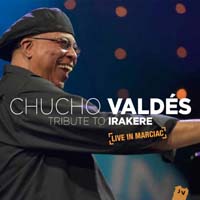
CHUCHO VALDES
TRIBUTE TO IRAKERE: LIVE IN MARCIAC (Jazz Village)
Forty years is a long time, and it's over 40 years since Irakere made its debut with a fusion of Afro-Cuban ritual music with jazz and even rock influences. To celebrate the history of the band, Chucho Valdés is touring the USA (now that Obama has discovered his latin groove) and the band's leader and driving force Chucho Valdés, son of the legendary Cuban pianist Bebo, is now the headliner. He is a fine pianist and can pound out big ham-fisted chords, or lapse into very sedate classical bits of Lecuona or Johann Sebastian. As recently as August 2015 the band was touring Europe and this album is a fresh out of the oven recording of them in France. It's now a second-generation of musicians, many of whom are in Valdés new project The Afro-Cuban Messengers. I believe the original band expired about a decade ago. The Messengers have been augmented with three trumpeters and two saxophones for this tour. I am less engaged by the sax player (I didn't get any packaging material so don't know the specifics of the band). Chucho, whom I think of as junior though he is 74, says he cried when the band rehearsed the old Irakere material, such as "Misa Negra," "Juana 1600," their unique take on "Stella by Starlight" called "Estela va a estallar" and the extra-classic "Bacalao con pan." There are strong Afro-Cuban ritual elements in the drumming and chanting that kick off the album but then it goes into a more familiar jazz groove. Of the tracks mentioned above, only "Juana 1600" is on the Marciac set, the other tunes are two by the Afro-Cuban Messengers, "Yansá" and "Lorena's Tango," and three jams. Each track does have space for a conga and percussion solo which is welcome but it makes the band seem that much more noodly when they come back in. "Afro-Comanche" goes from a Bach 2-part invention into a jam and then an orchestrated bridge that reminds me of Les McCann & Eddie Harris' Swiss Movement. Come to mention it, the next track, with the uninspired title of "Afro-Funk" also sounds like that evergreen disc. The last track "Yansá" turns into "Take Five," though I had not noticed the time signature before then. It breaks down into the "knackered horse" rhythm where the conga player clip-clops slower and slower, a novelty overused on this disc. You'll have to catch them live if you want to experience the old Irakere material.
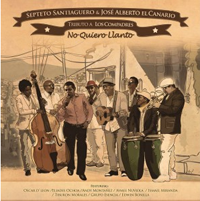
JOSE ALBERTO "EL CANARIO" & SEPTETO SANTIAGUERO
TRIBUTO A LOS COMPADRES "NO QUIERO LLANTO" (Los Canarios)
This is an all-star line-up to celebrate Cuban son music as performed by the soneros of Santiago. The big names joining up are Eliades Ochoa (last survivor of BVSC?), Andy Montañez, Ismael Miranda and Oscar de Leon, each of whom sing lead on one song. The set list is familiar but that gives everyone a chance to show off and the sound is amped up and hot. Songs of Duo los Compadre -- both Lorenzo and Reinaldo Hierrezuelo and Compay Segundo -- plus Vieja Trova Santiaguera make up the bulk of the repertoire. The first thing that comes to mind is where is Barbarito Torres and why have we not heard from him in ages? But there's overflowing talent here. I have never heard of Aymee Nuviola but she has a cheeky delivery reminiscent of Celia Cruz in her prime (& a bit of googling shows she just received a Latin Grammy nomination for best Salsa Album of 2015). The first disc ends with "Su Señoria la conga" and if there's one thing that drives me wild it's a good conga with snake-charming reeds flailing wildly over beat me daddy percussion. That track was written by Flea (no, not that Flea) and features Joaquin Solórzano on "Corneta china." If a disc of this is good, a double-disc is a real indulgence. Fans of Cuarteto Patria will love the appearance of Elaides Ochoa performing "A Georgina" on disc two, though the string quartet is not strictly necessary. The great Alejandro Almenares also features on this cut. "Amor silvestre" dispenses with guests and shows the rip-it-up sensibilities of the core group with killer bongo and hard driving cowbell urging on the singers, trumpet and coro. Every now and then a scorcher like this comes along and makes me wish I was still a DJ. You could have the dancefloor in the palm of your hand with this album. Capitalist swine in the form of MacDonalds or Starbucks may get to Cuba before me, but I feel assured this timeless music will still be there when I make it.
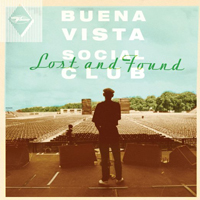
BUENA VISTA SOCIAL CLUB
LOST & FOUND (World Circuit)
The Buena Vista Socialists were like Africando in two ways: they were a nostalgia band that turned into a real meal-ticket for some old musicians and their promoters, but consequently (to their being old) they had a knack of dying off. So I believe BVSC is now extinct although the younger Afro Cuban All Stars who were their backing band continue to tour. However the music remains and for anyone who wants another dose, or has worn out their four albums, we now get Lost and Found, a mellow album of chestnuts and lesser-known cuts from the BVSC in their prime. Some of the tracks were laid down in Egrem Studios, Havana, during the original 1996 session that led to their breakout as massive international stars. (Although Ry Cooder was there and put his name on the recording, the sessions were organized by Juan de Marcos González, the true leader of the group.) A few more of the tracks here were recorded in subsequent world tours. "Bruca Manigua," featuring Ibrahim Ferrer, kicks it off, then the great Eliades Ochoa steps up with his guitar for "Macus," backed by the even more legendary Compay Segundo on coro. Some fine piano (Rubén González) introduces "Tiene Sabor," sung by Omara Portuondo. It's all high calibre material, perfectly executed. I can't get enough of laoud player Barbarito Torres: he has toured to my vicinity twice but otherwise I don't see any new albums from him. You may have enough versions of "Como Fue" or "Lagrimas Negras" in your collection, and maybe better ones too (certainly Benny Moré is infinitely preferable as a vocalist to Ibrahim Ferrer), but it's reassuring to hear the old familiar refrains wafting out of the speakers and bright moments for the top-notch backing musicians on bass (Cachaito), timbales, bongo & conga (Miguel "Angá" Díaz) etc. One treat is a trombone-led danzon, "Bodas de oro," featuring Jesus "Aguaje" Ramos on trombone with a big backing band and sadly, González' last-ever recorded piano solo. What sounds like violin is I guess Cachaito bowing his bass on the oddly named "Black chicken 37," a little spontaneous duet with Díaz. You can see why it was overlooked in the heat and excitement of the first album, but it's a fine little memento. I am a sucker for danzons and boleros so this is most suiting to my taste. I like the sequence: Eliades Ochoa opens big at the beginning then returns for two more laid-back brief cuts two-thirds of the way through. These two were grabbed after-hours in the Egrem studios and have a great late night feeling. Ibrahim and his big band take on another Arsenio song live, "Mami me gusto" features bass, trumpet & trombone solos and a wildly enthusiastic audience. Rubén González wraps it up and ties a bow around it with his brief recital, "Como siente yo," performed in his London gig of 1996 after his return from retirement age 76.
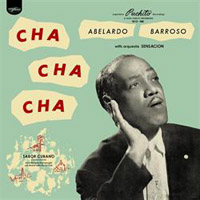
ABELARDO BARROSO
CHA CHA CHA (World Circuit)
From the label that brought you Buena Vista Social Club, it says optimistically on the front of this nostalgic reissue. Since he was born over a century ago, it's unlikely Abelardo or remnants of his band will be touring again to promote this. Fans of Cuban son undoubtedly have one of his "best of" compilations (e.g., that on Edenways 1997), or Bruca Maniguá by Abelardo Barroso con la Orquesta Sensación from 1961. His history is well-documented in the annals of Cuban music. One of the first son groups was Sexteto Habanero and in 1925 Abelardo joined them ... as driver! But the following year he joined first Sexteto Boloña of Alfredo Boloña as sonero, then Ignacio Piñeiro's Septeto Nacional, and traveled to New York to record for Columbia Records. Columbia insisted on having a trumpet and Barroso was able to vocalize in concert with trumpeter Lázzaro Herrero who had expanded the sextet into a septet. In the 30s he was known as "Caruso" when he sang with Cachao's brother Orestes Lopez and was with them as they transformed the danzón into the charanga. In the mid-30s he launched a solo career with his wonderful and timeless "La Huerfanito (the Orphan)." In the mid-50s, strapped for cash, he approached orquesta Sensación and suggested they re-record his 1939 classic, "En Guantánamo." Older members of the audience ate it up and he made new fans. This monster smash was followed by other classics including "El Guajiro de Cunagua," "Tiene Sabor," "El Panquellero,"and "La Hija de Juan Simon," all of which are collected here. Barroso who has a throaty tone, suggesting a glass or two of rum has lubricated his throat, never used a microphone and ultimately paid the price: he had to have surgery on his vocal chords in 1967 which ended his career. Also the Cuban revolution ended his triumphant overseas tours to Miami and New York. Even the legendary Beny Moré looked up to him as a teacher and, as Machito laid claim to the mambo, Barroso made the cha cha cha his own domain. It is wonderful that World Circuit has returned to Cuba and if this flies they may delve further into the vaults. If you think the cha cha cha is something staid your swinging uncles and aunties did at cocktail parties, check out the wild percussion (guiro, timbales and congas), tight arrangements with piano, violins and flute, and especially the slurry good-time vocals of señor Barroso, the Cuban Caruso.
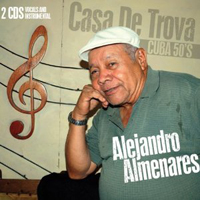
ALEJANDRO ALMENARES
CASA DE TROVA: CUBA 50s (Tumi 228)
This is a kind of music I love: classic son and trova from Santiago de Cuba. It's a great collection from the man who wrote "Mueva la cintura mulata" (made famous by his first band Cuarteto Oriente; it is not on here, though I wish it were). Born in 1927, Almenares is one of the last of the troubadours of Cuba's golden age. He still gets down to the Casa de la Trova where he plays with the likes of Eliades Ochoa, who already made his fame and fortune thanks to BV Social Club. This is a warm and wonderful set of his original compositions. It's well recorded, with crisp percussion and big bass in the mix, there's just one drawback: It's a two-CD set and instead of two discs packed with great music, there is one disc of songs and one of instrumentals. I really could do without the instrumental disc, especially since there is some mediocre soloing from gypsy violin (!), sax and flute replacing la voz. But then the tres strides forth and all is well. Almenares carries the whole thing, for in addition to being the composer he is also the tresero. This is not a condemnation of the album, since it's still priced as a single disc, I just think it was a waste of time adding the instrumental disc which I probably won't listen to again. Almenares is credited as composer (& his father on some tracks), but some of the songs, like the bolero son "Mujercita linda" show the influence, even the licks, of Trio Matamoros who established this field (in terms of recorded music, at least). It's a bit coy to claim an original composition when it is a note for note cover of "Amorosa guajira" by Nené Allué but then even the mighty Beatles stole this tune for "Do you wanna know a secret" (I have often wondered who brought it to them, because in 1963 it was already an oldie on 78 rpm. Probably a friend of George who knew how he liked to arpeggiate chords on his guitar). I don't wish to sell this short: It's a great set of finely honed originals, impeccably rendered by tres, guitar, double bass and percussion. There are two singers and a guest appearance from Eva Griñan to whom the album is dedicated as she died after it was recorded. The Casa de la Trova is high on my list of places to visit: music like this demonstrates why.
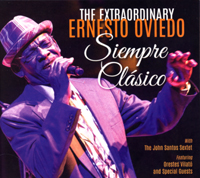
ERNESTO OVIEDO
SIEMPRE CLASICO (Machete Records M212)
Fans of Buena Vista Social Club will really enjoy this laid-back set, and maybe recognize some of the standards presented here. It is a collection of classics from the Cuban repertoire of boleros and trova, performed by one of the Oviedo brothers, backed by the superb Latin jazz musicians of the John Santos Sextet. The overall ballad tone also suggests Johnny Hartman: smoky late nights with rum twinkling in a glass of ice. Isaac Oviedo was the singer's father and his brother is tresero Papi Oviedo, who actually is in the BVSC. Isaac was exposed to North America listeners by the team that made Routes of Rhythm, the TV documentary with Harry Belafonte, and Rounder put out his sole American CD in 1992 on which Ernesto sang. Isaac's other son Papi had a fine release called Encuentro entre Soneros on the Candela label in 1997 and then a duet with Papa Noel called Bana Congo that came out on Tumi in 2002. So here is the debut of Ernesto, who is now 78, but has been performing with the Estrellas Cubanas in Havana. Santos brought another legendary Cuban to the set: timbalero Orestes Vilató, who also plays bongos and bell when not battering the timbales. Vilató (who has been part of some crucial outfits, including Santana, Ray Barretto and Cachao's bands) gets to rock out on bongos on "La Historia de un Amor," a ballad that was the theme for a 1956 Mexican movie and here it is turned into a riotous rumba. I miss tres, especially on "Bruca Manigua," (while has solos from violin and timbales), but guitar is provided by José Roberto Hernandez who is featured on "A mi Manera" by Marcellino Guerra. Marco Diaz on piano is a outstanding throughout.
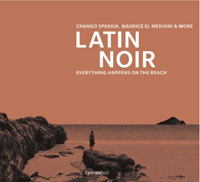
LATIN NOIR (Piranha)
My iTunes is out of hand. There's over two weeks of continuous music in there and it's not all stuff I want to hear or even know (And I am not just talking about the tunes labeled "Track 01"). I ask labels not to send me links to downloads, but rather physical copies of new items, but that's becoming rarer. So I decided to start weeding. I threw out the Rough Guide to Latin Dance -- it was all over the place and incoherent: Started off badly and had many flat spots which would clear the dancefloor. There were two good tracks on there "Santa Isabel de las Lajas" by Sierra Maestra and "Jaloux Jaloux" by Mystic Orchestra from Colombia. Then I found this Latin Noir, which is just the ticket, though my copy is not all there, I seem to be missing some tracks. Either I deleted them, they didn't unzip, or they walked off. There are three overlapping artists with the RG2LD, Maurice El Medioni, the Algerian pianist who does trinkly old-style ballroom dancing salsa, accordeonista Chango Spasiuk and Watcha Clan. The main offerings are an abundance of son and rumba, such as "Todo eso" by Seguidores del Son and a lovely version of "Ruñidera" by Son de Mayabeque, new groups to me. They are modern keepers of the tradition (I suspect) like Estudiantina Invasora who are here with a rousing live "Commandante Che Guevara." The sound is crystal clear, and you can appreciate all the nuances of percussion and still hear them when the horns arrive on "Rumba para los Olu Bata" by Eddie Bobe. "Las Alturas de Simpson" is a creaky, squeaky old-time danzon by Piquete Tipico, and a pure delight. Next up Alfredo Guiterrez, oops, that's missing too. Too bad, as I suspect it's a good one. Man I hate this download crap! Drives me to distraction. How can people stand this nonsense? Anyway, Latin Noir is a good compilation, if you can manage to keep it all together. One more thing, dear folks at Piranha, can you turn off the music on your website? I hate having music from websites competing with the music I am listening to, it's most distracting. Or at least have a mute button on your homepage? Sorry to get off topic, reader, but I have now discovered that all the tracks on here are mislabeled in iTunes, so I am dumping this behemoth and going to go to VOX which is a free music player. Yes, check out Latin Noir, it might soothe your frazzled self.
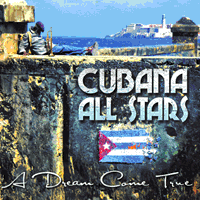
CUBANA ALL STARS
A DREAM COME TRUE (Viva Combo Music VCD033)
This project is indeed the fulfillment of a dream. In the last half century many Cubans fled their homeland and settled in Miami, New York, Spain, and other places, bringing their music with them. Huge stars, like Celia Cruz & her Cottontops (Tito Puente &c), made their careers outside their native island. Producer Richie Viera had the idea to bring 40 top-flight Cubans back to Havana and cut a super-session at EGREM studios, along with some who didn't leave, like tresero Pancho Amat and guitarist Elaides Ochoa, who has won Grammies for his solo projects as well as his role in BVSC. The Cultural ministry waived the rules to allow back some musicians who have been critical of the Castro regime and made possible the return of Isaac Delgado from Puerto Rico, as well as Chocolate Armenteros and Xiomara Laugart from New York, among many others. The assembled stars lick out the jamjars on some classic tunes including Los Van Van's "Muévete," an inverted 12-bar (G, F, C9, G), which always makes me think of "Sympathy for the Devil." Another clear rock influence is the opening of "Xiomara," which unmistakably quotes "Sunshine of your love" on the horns. In order to give everyone a chance, several versions of some titles are included, featuring up to seven vocalists, so you get "Latin Diva" versions, instrumental versions, "Dos Amigos" versions etcetera. This is actually not so great as you end up with two almost identical albums unless you listen closely to distinguish the vocalists. It's an embarrassment of riches: they should either have invited fewer guests or had a wider repertoire. There are a lot of Los Van Van songs plus well-known hits by Adalberto Alvarez and others. The opener on both discs, "Preparate pa' lo que traigo (Get ready for what I am bringing)" is an all-out jam; the second version has a smoking tres solo from Pancho Amat, definitely one of the outstanding soloists on this Cuban instrument. I don't think you really need three takes of Albita's "Que manera de quererte," or "Muevete," though they certainly have fun on these classic cuts. The energy is high so I guess if you get this it wont matter which disc you put on, you'll get an instant salsa party, and no one will need to say, Wow, play that again!
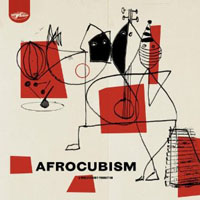
AFROCUBISM (World Circuit/Nonesuch 525993-2)
I am having a hard time getting behind this: it should be one of the best albums of the year, yet it leaves me dissatisfied. The idea is solid, in fact it was the idea that became Buena Vista Social Club, by accident. Nick Gold's original plan was to get a bunch of Malian musicians to Cuba to jam but due to visa problems they never arrived. So at the last minute Ry Cooder and his son showed up and filled in the spaces that were to have been filled by Djelimady Tounkara of the Rail Band and Bassekou Kouyaté -- as if they could. Everyone agreed it was a great missed opportunity, nevertheless the resulting BVSC albums went on to sell 8 million copies, and hopefully gave a little financial relief to some fine musicians in their twilight years: Ruben Gonzalez, Ibrahim Ferrer, and so on. Unlike the BVSC band members, the project never died. Meanwhile another producer, Günter Gretz, got the dream super-session together, with Laba Sosseh, Pape Fall and Mar Seck on vocals, Issa Cisshoko from Baobab, guitarist Yahya Fall of Number One de Dakar, & others who recorded Los Afro-Salseros de Senegal en la Habana in 2001. That's a great album, though without Cuban performers. But Popular African Music doesn't have the marketing clout of World Circuit. So here, belatedly, is Afrocubism, which features Eliades Ochoa and his Cuarteto Patria backing vocalist Kassé Mady, Toumani Diabaté on kora, Bassekou Kouyaté on ngoni, Lassana Diabaté on xylophone and Djelimady Tounkara on guitar. It should be superb but instead is two separate albums: one of Grupo Patria going through some mouldy oldies interrupted by the occasional burst of inspiration from the Africans. I get the feeling they didn't really rehearse this (a trip to cyberspace confirms this: it was recorded in Madrid without rehearsals), so true cold fusion is lacking. The problem with this disc is it's an Eliades Ochoa album with guests. Ochoa is fine in his own context but he cannot match riffs with Djelimady the way someone like Barbarito Torres could. "Guantanamera," "La Culebra," and "Al vaiven de me carreta" are such chestnuts Ochoa plays them in his sleep (as here), and of course they morphed into a million other tunes as they crossed the Atlantic back to Africa, but you don't feel the excitement in this exchange: Ochoa does his thing and then sits back. I think if this had happened two decades ago, as planned, it would have been phenomenal. The Africans' contributions are indeed exceptional (like "Djelimady Rumba" or the Malian classic "Jarabi"), and stand on their own, but the kind of thrill that comes from a real encuentro, like the "Soukous goes to Barranquilla" stuff, is missing. Some of my geriatric friends will enjoy it for nodding out, but it's like Casa de la Trova, Djelimady solo, and Symmetric Orchestra on shuffle.
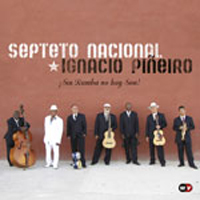
SEPTETO NACIONAL
SIN RUMBA NO HAY SON (World Village 468105)
Though their founder, Ignacio Piñeiro, died in 1969, Septeto Nacional chugs along purveying son to the world, as they have since the 1920s. Piñeiro was first to think of adding trumpet to the line-up, creating the son habanero, and scoring massive hits with "Echale salsita (Put some salsa on it)," "No juegues con los santos (Don't mess with the saints)," and the truly sublime "Suavecito." His Septeto Nacional recorded in New York in 1927 and toured the world until the group fell apart in the mid-thirties over money squabbles. But they reformed in the 1950s and are now on their fourth generation of players. They toured last year (their first gig in San Francisco since 1933 made the local news) and are back again, promoting this new album. They do three oldies, injected with new life as songs they have worn like a white suit and still manage to keep it sparkling. The other material is composed by band members in the classic style, or covers by noted composers such as Marcelina Guerra or Almenares' "Mueva la cintura," which turns into "Autumn leaves" in the bridge! From the first notes of "Embale tiene la llave," a tribute to Carlos Embale who sang with the group in the early 50s, by bongocero Francisco Oropesa, we are in that blissful space where the "llave" is not only the key to happiness but the clack of the hardwood sticks, the claves, that propel the rhythm. Enrique Collazo Collazo is also an exceptional tresero: just check out his solo on "El Plato roto." Los Rumberos de Cuba show up for some fine drumming in the middle of the album. Here is a group of talented artists who are comfortable with their accomplishments and have attained the highest level of their art without needing to show off or showboat, just coast along on the clave.
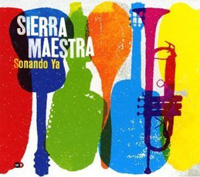
SIERRA MAESTRA
SONANDO YA (World Village 450011)
I am a huge fan of Grupo Sierra Maestra from Cuba. They keep the Son Montuno and other favourite Cuban traditional sounds alive and vital. Over the years they have ebbed and flowed and left a high tide of great CDs. This is their 11th CD, that I know of. At the outset they had two massive talents in their ranks: Jesus Alemañy on trumpet and Juan de Marcos Gonzalez on tres. Their peak was perhaps the 1994 recording DUNDUNBANZA! which paid homage to the music of Arsenio Rodriguez. Alemañy left in 1995 to form Cubanismo, the spectacularly successful salsa orchestra; Juan de Marcos, of course, is band leader of Buena Vista Socialists and Afro Cubist All Stars. The band continued and made recordings with guest artists, and even toured the US. But then lead vocalist José Rodriguez died in 2005, so now only half the original band remains, under the stewardship of bassist Eduardo Himely. They are still wonderful, in my estimation, but really don't have the explosive power of their earlier recordings. For this outing they provide mostly original compositions in traditional styles, such as son, son montuno and guaracha. There are still moments of fine musical convergence: "Juan Andres," the sole changuí track, catches fire, & they go steaming out on a conga "A ti, no te sale!!"
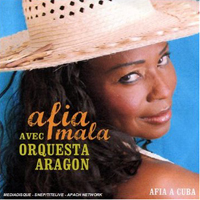
AFIA MALA & ORQUESTA ARAGON
AFIA A CUBA (SNEP Mediadisque, available as a download from Amazon)
She is from Togo; they are legends from Cuba. Aragon emits sparks with charged charanga orchestration: flute, violins, swinging baby bass, and this time out the legendary Pancho Amat on tres, Guillermo Rubalcaba on piano, and Tata Güines (who died early in 2008) on congas. I have seen Amat in concert a few times and he is an awesome player. I think I have seen the other two old-timers too, and I have definitely seen Aragon (at a Russian Community Hall in SF) but my memory is getting shaky. Suffice it to say when you draft three legendary musicians into a class act like Aragon you are dealing with high level creativity. Here's a case of Africans getting it right once again. After the great work of Lassissi and many of the men who were drafted into Africando, like Pape Seck from Star Band, fellow-Senegalese Laba Sosseh, the great Gnonnas Pedro from Benin, we now have a female vocalist from Africa fronting a smoking Latin danceband orchestra. So far Mala has done mainly wretched disco stuff in the 90s, but she seems to have found her footing with salsa. I have to thank artist Ken Abrams for turning me on to this. There is so little exciting new music that I often despair; then we get NO touring acts in San Francisco, apart from esoteric stuff that I am reluctant to take a chance on, or predictable things like Afro-Cuban All Stars at a sit-down concert hall. And increasingly labels are not putting out actual albums but just those aetherial things called downloads which often have low-fi mp3s instead of the wide dynamic range we vinyl aficionados like. But this sounds fine, despite the maddening lack of info (I figured out the guests from shout-outs in their solos). And while the sound quality is okay, the musicianship is exceptional. This will make you jump for joy, if not grab a partner for a twirl around the floor. There's a tribute to Los Van Van, otherwise I think it's mostly original material, but of course the soloists quote all sorts of familiar yet maddeningly hard to pin down things.